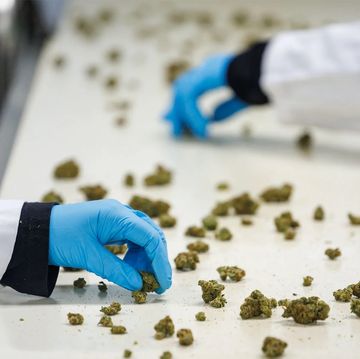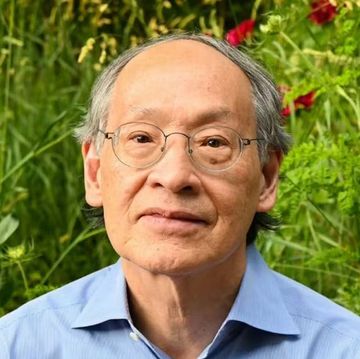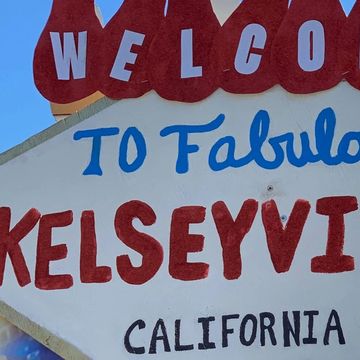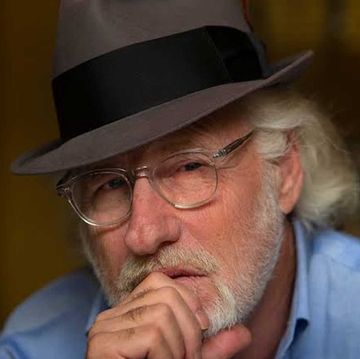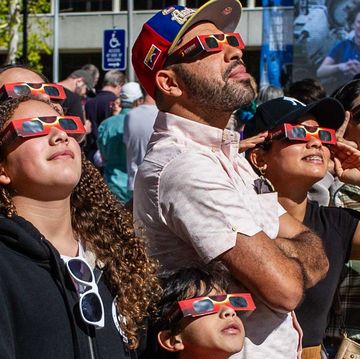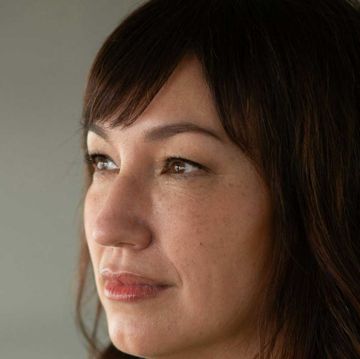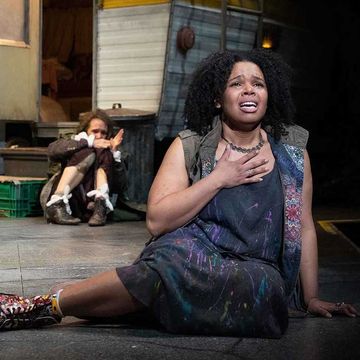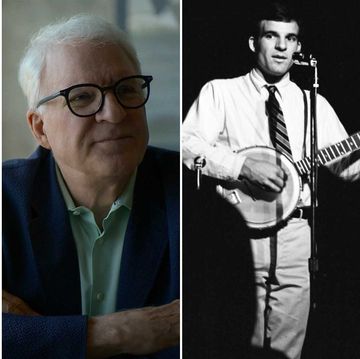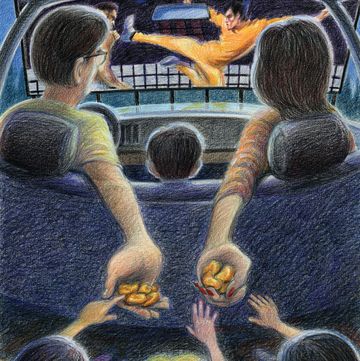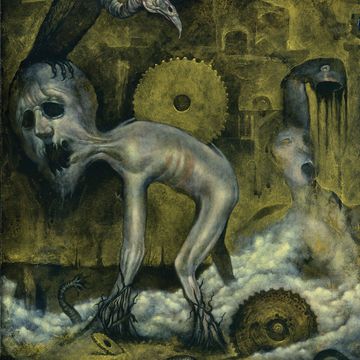When Roy Rogers, Dale Evans, Bud Abbott, and around 30 other showbiz folk established Pioneertown in 1946, they envisioned it as a “living, breathing movie set,” per the Visit Pioneertown website. Unlike the two-dimensional facades that were erected and torn down every time they wanted to make a western, Pioneertown was three-dimensional and permanent. Just 125 miles east of Los Angeles, they could shoot their films on the mesas and against the Sawtooths of the Mojave Desert, stage a few scenes in the 1880s-style buildings on “Mane Street,” and, after wrapping for the day, post up, get some chow, bowl some frames, and even send letters back home to the studio heads from the town’s working post office. From the late ’40s to the late ’50s, about 50 movies and TV shows were shot here, including The Cisco Kid, The Gene Autry Show, and Annie Oakley. Eventually, though, as the golden era of westerns ended, this real fake boomtown became a bit of a ghost town.
In the years that followed, the tiny unincorporated area that grew to about 500 residents endured many threats to its peace and quiet—fires, floods, arsenic-rich well water, a broken highway, a Paul McCartney show—and survived them all. But now, Pioneertown finds itself facing a showdown with a new set of black-hatted strangers. As visits to Joshua Tree National Park have steadily climbed in recent years, boosted by the post-pandemic boom; as investors have left no house unflipped; as any place that can has become an Airbnb; and as every influencer worth their follower count has had their picture taken on some rocks, the town has become the weary, trampled set for every cosplaying cowpoke’s and calamitous carpetbagger’s personal western.
Suddenly, it’s high noon in Pioneertown.
The Pioneertown elders are OK with a very specific, metered growth, one that allows them to figuratively keep the lights on while literally keeping the lights off, the better to see the stars. What they don’t want, in the words of longtime resident Susan Burnett, or Sue B., as she’s known, is “dumb people who do dumb things.”
What kind of dumb things? Trying to hold a several-thousand-person rave, hosting helicopter tours, lighting up your ranch like a beacon, jumping out of helicopters, practically anything involving helicopters. “We don’t need helicopters here kicking up clouds of dust,” Sue B. says. A former Los Angeles stylist, Sue B. is the self-appointed “complainer” for fellow residents who don’t have the energy to do it themselves. “If there’s an ordinance and you’re breaking it, and it’s screwing up my desert experience,” she says, “I’m calling the county on you.”
Sue B. has logged too many loud-music and bright-light complaints to keep track of them all, but, she reasons, what other recourse does she have against fashion crews that feel entitled to stage unpermitted photo shoots on her porch? “If we don’t push back against these people,” she says, as her tone darkens along with her metaphors, “they will come like fucking ants, and we will be throwing everything in our pantry away because they will have infested where we live. And they will bring all the other ants with them.”
One such “ant” was Clark Fyans, a heli-skiing mountaineer from Utah who came to Pioneertown via Venice, California, where he’d been a supervising producer for Red Bull Media and a mountain guide. At the start of the pandemic, Fyans found himself camped out in an unfinished shipping container on 358 acres in Pioneertown with one vision: to live in awe.
According to a former associate who asked not to be named, Fyans’s vision, which developed into a quest to build an empire, was born in the desert during a psychedelic trip taken with his friends (Fyans denies this). One such friend was allegedly Craig Atkins, a Newport Beach–based real estate developer who manages a billion-dollar portfolio and would finance the project. (Atkins did not respond to requests for an interview.)
Fyans and Atkins decided they’d call their budding utopia AWE, which, in addition to referencing their preferred living style, stood for (among other slogans) Are We Excited and Are We Experienced, the latter in tribute to Fyans’s hero Jimi Hendrix.
Fyans would run AWE’s many facets, which were to include AWE Ranch, a multi-use residence and event space made of shipping containers; a state-of-the-art AWE recording studio (also made of shipping containers); AWE Bar, which would feature drinks, food, and live music; and two non–shipping container triplexes to host the bar’s visiting acts.
Some desert residents were displeased by all of this. “I think Pioneertown is a particularly fragile community, and they don’t necessarily welcome newcomers,” says Barbie Sommars, a cannabis educator who was AWE Bar’s operations manager for a few months.
“There’s a lot of rumors and gossip, and they can be so cutthroat,” Sommars says of Pioneertown’s longer-term residents.
AWE’s rumored psychedelic-inspired vision was a big part of why Sommars signed on. She says she “mind-melded” with Fyans the moment they met, which inspired her to put aside her various cannabis projects and go work for him. Others, like Robyn Celia, former co-owner of Pioneertown’s most beloved institution, Pappy and Harriet’s Pioneertown Palace, felt differently. The first time Celia saw Fyans, she thought he “looked like a kid from Orange County.” The next time she saw him, she recalls, he looked more like a local—or a stylist’s idea of a local: “His hair was long, he was scruffy, he had the pocketknife, there was a hat, he had the fucking feather in the hat. I had no idea it was him.”
Celia’s reaction to Fyans’s desert transformation and misjudgment of the local tolerance for Burning Man–meets–Fyre Festival–type activities was one of the gentler ones. Fyans’s other neighbors expressed their full-throated disapproval on Facebook and in group emails, depicting him as the captain of a container ship that was about to crash into Pioneertown. Some didn’t hide behind their screens to deliver their opinions. “I literally laughed in that guy’s face,” recalls Sue B.
In early 2022, my husband, Kenny, and I fled our pandemic-eviscerated lives in Los Angeles. Lifelong residents, we thought we’d collect ourselves elsewhere awhile. “How about the desert?” I said when we opened Google Maps. It was pretty, quiet, and most of all familiar. Not one pair of cowboy boots has ever graced either of our closets, but the desert had been our preferred setting for so many MDMA shenanigans in the aughts and early teens. It was, as it still is for so many, an intoxication destination, both intoxicatingly beautiful and a beautiful place to get intoxicated. As much fun as it was to take drugs in the hot, dark night, we welcomed a chance to see the place in the sober light of day. The house we found in March 2022 was on the back side of Pioneertown and had an eastward view of the entire Morongo Basin. Over the past two years, we’ve watched all kinds of weather roll in.
A friend introduced us to Fyans because Kenny, a music producer who’s designed and outfitted several recording studios in Los Angeles, was floated as someone who could run the music arm of AWE. We were skeptical of the endeavor, but one May afternoon, we accepted Fyans’s invitation to visit AWE Ranch, where we were shown the house, still under construction, and asked for our opinions on the placement of certain shipping containers. Should this one jut out from the swim-up bar? Should it form part of the cabana? Or should it go on top of those others and make another story? Then Fyans, who used the word “cantilever” more than anyone rightly should, drove us around the massive property in a UTV, pointing to places where he planned to host shows, dance parties, glamping sites, be-ins, and other desert clichés. I sat behind him and gazed at the back of his baseball cap. “Deus Ex Machina,” it said.
Fyans showed us the spray of shipping containers that marked the beginnings of a recording studio whose layout he imagined falling along the Fibonacci sequence. Whenever Kenny gently noted that almost anything other than a metal shipping container would yield better acoustics, fidelity, and functionality for sound recording, Fyans would say, “I’m gonna challenge you, dude.”
I think he was sort of trying to create this utopia,” says Sommars. “I can see where people jumped to conclusions: ‘Oh my God, it’s real estate developers!’ But I always thought Clark had the best intentions with that land.”
As for AWE Bar, Fyans was actively preparing for its opening even as locals saw it as a gauntlet thrown to the dusty desert ground in the face of a formidable, 40-year-old competitor: Pappy and Harriet’s Pioneertown Palace.
A biker bar and BBQ joint when Celia and her partner, Linda Krantz, bought it on credit cards in 2003, Pappy’s became a place where Robert Plant and Paul McCartney liked to play and that more than a few people believe had magical powers. (Example: the 2006 Sawtooth Complex Fire, which destroyed much of the area, somehow spared Pappy’s.) For the locals, Pappy’s was Cheers, where everybody knew their names, and their names were Horseshoe Freddy, Tweaker Bob, Vietnam Bob, and Hippie Al. Many say they can pinpoint exactly when Pioneertown was spoiled: April 2021, when Celia and Krantz sold the bar to arrivistes from Los Angeles.
My last time at Pappy’s before the new owners took over was when a small group of my friends took our friend Josh, who had ALS, there to see Dinosaur Jr., his favorite band. It took two hours to get Josh from his bed in Monrovia into the crane that lifted him into the wheelchair-accessible van before we even started the two-hour trip to the desert. During our drive, the generator that was keeping him alive could have run out of juice, or Josh could have shifted in a way that blocked his trach tube and suffocated. He couldn’t move or tell us what was happening, so the journey was particularly fraught.
The way we felt when we finally saw Pappy’s rise up from the black night and the regulars come out to help us usher Josh in was, yes, all right, magical.
Nothing of that spirit remained when I returned in 2022. It felt instead as if I’d inadvertently gotten on Pappy and Harriet’s: The Ride. The place was full of people who looked like they’d bought special clothes just to go there. The homey, Cheers-y feeling was gone, as were Horseshoe Freddy, Tweaker Bob, and Vietnam Bob. (Hippie Al was hanging on, but barely.) There was a new sheriff in town, or rather, two new sheriffs.
JB Moresco and Lisa Elin, Pappy’s current owners, had held a meeting with the town “stakeholders” (a word Sue B. hates) in which they’d promised not to turn the desert oasis into Ibiza, or worse, Coachella. Soon, they raised the food prices; threw around names like “cosplaying cowboys”; and, according to a lawsuit, locked out their partners, canceled a bunch of shows, and told a beloved old lady to “fuck off.”
“We can’t go to Pappy’s anymore,” says Sue B. quietly. The place where, as a former regular told Celia, if you were alone, someone would join you for dinner, and if you got too drunk, someone would drive you home, is no more, and nothing seems poised to replace it.
In April 2022, after resolving many internal upheavals and jumping through the county’s endless hoops, AWE Bar finally opened. It was greeted not with awe but with fervent disdain. Yelp reviewers wrote long, narratively intricate posts about the bad times they’d had there. People complained about the high prices, inattentive staff, cold temperatures, harsh red lighting, and black walls adorned with Jimi Hendrix posters. Many patrons criticized the weak drinks and long waits for overly ambitious food. “You only do fried squash blossoms at one time of year when you live in a place where that shit grows!” says Sue B.
It seems the only venue fully blessed by the old guard is Yucca Valley’s Tiny Pony, which many folks call Tiny Pappy’s. Newer places like the Red Dog Saloon, the Pioneertown Motel, and now the Copper Room in Yucca Valley are begrudgingly tolerated. The owners of these spots, Matt French and his brother, Mike, are two Portlanders who worked in hospitality in Los Angeles before coming to the desert. They intend to expand their reach, having already resurrected the long-defunct newspaper the Pioneertown Gazette.
“It’s, like, a really exciting time, both personally and for the projects we’re doing,” Matt French tells me one afternoon at the Red Dog. Talking to him, I wonder how a guy who vacillates between western wear and yoga casual has been able to thrive in this prickly, dry sand. “There are very, very limited options here,” he says. “Any new restaurant or bar, at least in our experience, has been really well received.”
French, who’s lived in Pioneertown full-time since 2016, bemoans the crush of Airbnbs that High Desert residents have had to contend with since the start of COVID. “It’s creating a situation where housing becomes more expensive, housing becomes more scarce,” he says, sounding like a desert lifer. “Our employees have an incredible challenge to find housing because they’re competing with buyers of Airbnbs. They’re competing with people who don’t live here.”
The Airbnb market, at least, seems to have settled down, or, more specifically, “fallen off a cliff,” as Brian Simpson, a Los Angeles musician and bar manager who now lives in one of his own Airbnbs in order to afford his other Airbnb, puts it.
After an overwhelming number of noise complaints, trespassing accusations against visitors, and some newer owners’ reimagining of sleepy desert neighborhoods as de facto hotel and resort complexes, San Bernardino County implemented a variety of zoning restrictions on short-term rentals in July 2022. The new rules limit short-term rental permits and eliminate automatic permit transfers when properties sell. Properties are selling for less, too. According to the online real estate company Rocket Homes, houses in Yucca Valley are selling for 7.2 percent less than they did a year ago. In Joshua Tree, once the pandemic landing pad of choice, the median sales price was down 17.8 percent as of February 2024.
Has the desert peaked? “I hope so,” says Sue B. It was perhaps all part of the “desert folly” that Billy Savage, a longtime resident who volunteers at the Simi Dabah Sculpture Foundation in Joshua Tree, has been watching for years. People may make big plans for this place, but as Savage says, “the Mojave decides.”
While the Mojave is making its decisions for trends like short-term rentals and short-term restaurants, there’s one foe scoping out Pioneertown that may make residents long for the good old days of heli-bungee-ing cowboy cosplayers. It’s the kind of foe that the desert can’t burn with its heat, sting with its scorpions, prick with its plants, or blow away with its wind: the long arm of the law. And this sheriff might be fixin’ to slap Pioneertown with the harshest blow of all: chain stores.
In October 2020, San Bernardino County adopted a new Countywide Plan that could rezone Pioneertown for the sort of development allowed in the rest of the area. The buildings on Mane Street are listed on the National Register of Historic Places, but that provides only limited protection from major corporations that see the town as a natural Target.
“Currently, San Bernardino County zoning treats Pioneertown as if it is no different than anywhere else in the county,” says Ben Loescher, an L.A.-based architect and years-long part-time Pioneertown resident. Loescher, who understands that some growth is necessary to keep Pioneertown going, wants the new buildings to “fit in with the old.” He outlined a way to do this in a proposal called the Mane Street Overlay, which was submitted to the county in October 2021. In typical High Desert fashion, there had been no movement on it as of February 2024.
Assuming it doesn’t fall prey to Starbuckses and Dollar Trees, Pioneertown will probably continue to fulfill its own prophecy: it will stay a living, breathing movie set where the actors get younger as the pictures get smaller. At its heart, Pioneertown is a tourist attraction. The only cowboys passing through are intent on wrangling likes on Instagram, not cattle. All this grit is probably just another part of the mirage. The Pioneertown Gazette now prints new ads for high-end boutiques alongside reprints of old news; the pictures of the Rat Pack on the Copper Room’s walls look like they could’ve been taken there if you squint; the six-figure off-road vehicles driving down Mane Street are as clean when they leave town as when they drove in. If everyone stops pretending, Pioneertown fades into the sunset.
“Pioneertown was founded by cosplaying cowboys!” says Sue B. “Do you think Roy Rogers wore a rhinestone-spangled fucking suit every day?”
In the end, AWE Bar was the only AWE entity that made it past the buzz-building Instagram phase, and it lasted less than a year. When I asked Fyans to participate in this article, he told me he’d left the desert and gone somewhere he could be appreciated.
“I guess I wasn’t well received,” he said over DM, presumably living in awe of how wrong it all went. “I really believed in Clark’s vision,” says Sommars, who left AWE Bar about a month after it opened. But at some point, she continues, “he started sacrificing his own vision, and I was like, What happened to all this passion in your vision?” She starts to cry. “His vision was so beautiful.”
I ask her what this vision was exactly. “To be in awe,” she tells me. “To be in a state of awe for music, for nature, for the desert.”
Soon enough, I’ll be leaving here too. Kenny and I are going back to find a new home in our old home, Los Angeles. Wandering the desert for a biennium, I saw a lot of pretty scenery, but no actual scene. All kinds of weather rolled in, but the climate stayed the same. It never pretended to be anything it wasn’t.
As we prepare to leave, I sometimes wonder what Kenny and I, in our safe, clean desert oasis, were pretending to be? What was I cosplaying? I never traded my beret for a Stetson, my Kraftwerk for Waylon Jennings, but I was still performing here. When our hometown started to feel like a disaster movie, we moved ourselves to the middle of nowhere, onto a fake movie set.
Now that dawn has broken and the winds have died down, we can see that this bit of desert is, you know, a bit of a desert. It’s not time for us to post up and play in the sand; it’s time to hitch up the wagon and brave our way west, like true pioneers.•
Stacey Grenrock Woods is a regular contributor to Esquire and a former correspondent for The Daily Show with Jon Stewart. She writes and consults on various TV shows, and has a recurring role as Tricia Thoon on Fox’s Arrested Development. Her first book is I, California.










